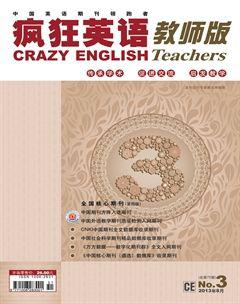A Study of Textual Metaphor in Hotel English
龚玲芬



Abstract: The theory of Grammatical Metaphor was first put forward by Halliday—the founder of systematic-functional school, whose research, however, only limited to ideational metaphor and interpersonal metaphor. Halliday took textual metaphor with a pinch of salt. This paper will focus on four representative forms of textual metaphor, that is, metaphorical thematic structure, metaphorical information structure, metaphorical cohesion and nominalization, based on Hotel English, to elaborate its factuality and theoreticality and excavate its functions in Hotel communication. Key words: grammatical metaphor; textual metaphor; Hotel English
[中图分类号]H030
[文献标识码]A
[文章编号]1006-2831(2013)08-0154-7 doi:10.3969/j.issn.1006-2831.2013.03.040
1. Introduction
The theory of Grammatical Metaphor was first put forward by Halliday—the founder of systematic-functional school, whose research, however, only limited to ideational metaphor and interpersonal metaphor. Halliday took textual metaphor with a pinch of salt. Although Halliday doesnt admit overtly that textual metaphor is one type of grammatical metaphor, researchers who are interested in the topic of GM have already agreed that besides ideational metaphor and interpersonal metaphor, the category of GM also includes textual metaphor. This paper will address the distributions and functions of textual metaphor in Hotel English. The notion of textual metafunction and textual metaphor will first be elicited in the theoretical framework of SFL, and then the distributions of four major types of textual metaphor, i.e. metaphorical thematic structure, metaphorical information structure, metaphorical cohesive devices and nominalization will be analyzed in Hotel English to show its functions.
2. Textual metafunction
2.1 The definition of textual metafunction
For textual metafunction, Thompson(1996/2000: 28) defines it as “in using language, we organize our messages in ways which indicate how they fit in with the other messages around them and with the wider context in which we are talking or writing”. Halliday (1999b: 528) explains it as “language as information”. It is a function about the verbal world, especially the flow of information in a text, and is concerned with clauses as messages. It is used to refer to the resources that all language must have so as to form discourse by ensuring that each part of the text makes contact with its environment, including both the context of situation and other parts of the text(Wang Xiaoping, 2005: 17). Ideational metafunction and interpersonal metafunction are concerned with the relationship between the text and the world and are thus “extrinsic”, the textual metafunction is concerned with the relationship within the text and so is “intrinsic”in nature (Liu Chengyu, 2008: 226).

